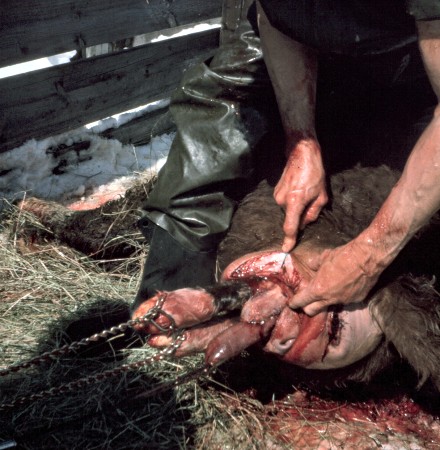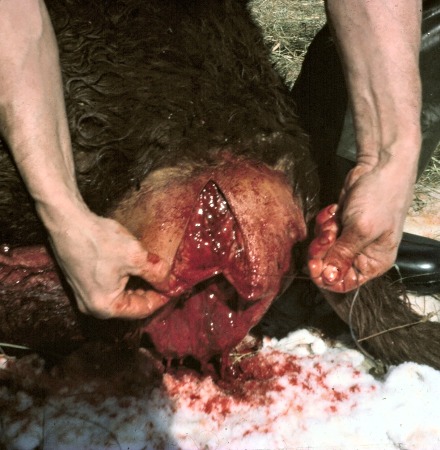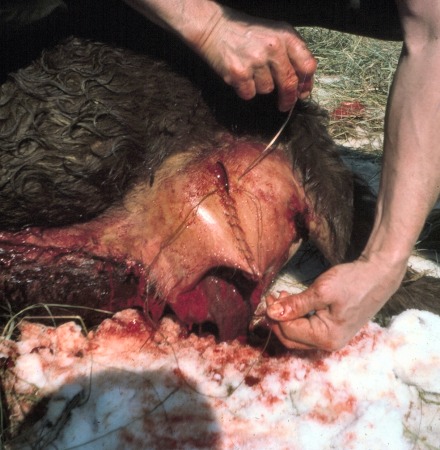The Visual Guide to
Bovine Reproduction
- Normal Calving
- Multiple Births
- Calving Facilities
- Pelvic Dimensions
- Calving Problems
- True Breech
- Sizing the Fetus
- Calving Injuries
- Cesarean Section
- Fetotomy
- Pelvic Splitting
- Episiotomy
Obstetrics: Episiotomy

Episiotomy 1.
If the head is very large and / or the vulva too small and tight, an episiotomy may be performed. Notice the extended tongue. While episiotomies are routinely employed in human obstetrics, their use in cattle is uncommon. If the vulva is tight it may be stretched with the wedged forearms of the operator before the onset of the assisted delivery. It is important that the episiotomy incision is towards the 11 o'clock or 1 o'clock position to avoid incising or tearing into the rectal sphincter.
Seemann CW (1983)

Episiotomy 2.
Closure of the episiotomy incision is done with #2 chromic catgut using a continuous suture pattern, beginning at the anterior end of the mucosal wound and progressing toward the mucocutaneous junction.
Seemann CW (1983)

Episiotomy 3.
Closure of the skin is done with the pattern of the operator's choice, making sure that the wound edges are securely sealed, in this perineal area prone to contamination. Supportive antibiotic treatment is indicated. The initial midline incision is closed with 2 or 3 interrupted sutures. Post-operatively, it is important to keep the patient on good footing to prevent her from spreading her legs too far laterally. The patient should be loosely hobbled at the pasterns and kept off concrete.
Seemann CW (1983)
